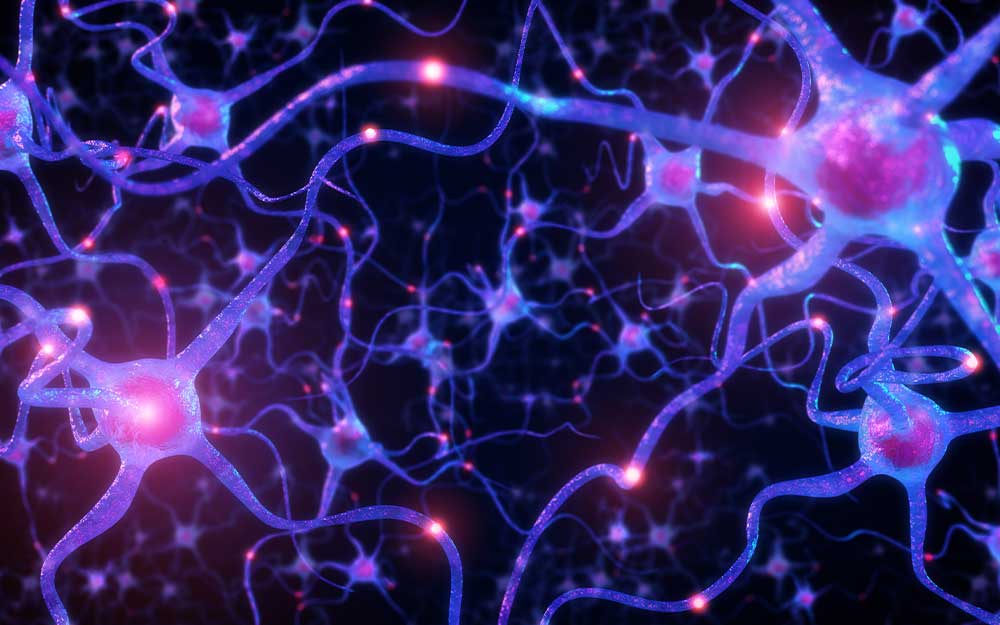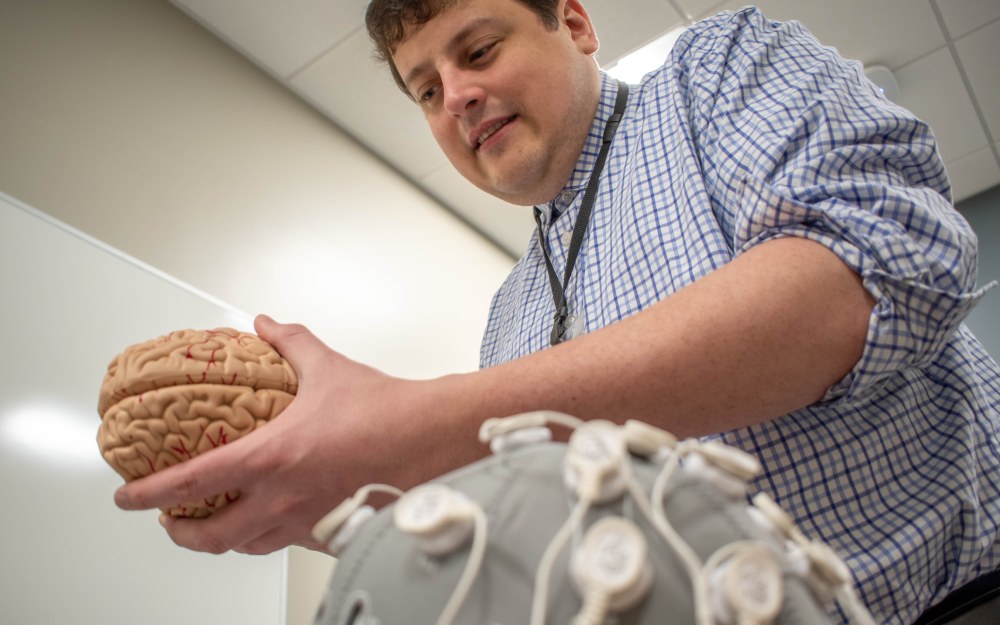
New neuroscience studies investigate OCD treatment enhancement, smoking behavior
02/15/23 01:00:pm
Among 60 active studies, many of which involve national academic and clinical partners, these two new projects are under the Research Center’s neuroscience core that aims to examine brain activity in response to interventions and treatment.
Transcranial Direct Current Stimulation as treatment enhancement for OCD
Rogers treats some of the most severe cases of OCD, typically in people who have tried and failed behavioral and medication treatments in the past. Without effective treatment, compulsions can become more pronounced and cause physical and other mental health problems.
Despite advances in psychiatric medications and therapeutic interventions, some individuals with OCD still do not respond to evidence-based treatment approaches like cognitive behavioral therapy (CBT) or exposure and response prevention (ERP) therapy.
In an effort to explore ways to improve patient outcomes, Rogers Research Center has initiated a pilot study investigating the effectiveness of Transcranial Direct Current Stimulation (tDCS) in conjunction with treatment as usual (CBT and ERP).
“At Rogers Research Center, we are committed to investigating effective enhancements to CBT and ERP therapies, especially for our patients with treatment-resistant OCD,” says Jeff Engelmann, PhD, a research psychologist who is leading the study.

Rogers currently offers another form of brain stimulation called Rapid Transcranial Magnetic Stimulation (rTMS) for patients who have not seen improvement in depression symptoms with the combination of therapy and medication. According to Dr. Engelmann, tDCS is more portable and has the potential to impact a greater number of patients.
“For individuals with treatment-resistant OCD, tDCS has already shown promising results as a tool to reduce OCD symptom severity, as well as comorbid depression and anxiety symptoms,” explains Brad Riemann, PhD, president of philanthropy, research, and clinical care. “However, it is not currently understood how tDCS creates longer-lasting changes in the brain. Understanding these changes is critical as they are responsible for long-term recovery from OCD.”
Made possible by a generous grant from the Catherine and Walter Lindsay Foundation, the study will involve participants receiving tDCS once per day over the course of two weeks. Since the immediate effects of tDCS on the brain can last up to 90 minutes, they will receive tDCS immediately prior to their treatment.
“By increasing medial prefrontal cortex activation before treatment, the goal is to make ERP even more effective,” Dr. Engelmann says. “To evaluate the impact of tCDS, we will evaluate the treatment outcomes in comparison to participants who receive placebo tDCS sessions.”
This month, the Research Center will begin recruitment of 10 patients from the OCD and Anxiety Adult Intensive Outpatient Care program at Silver Lake North. The pilot study is expected to take one year.
Community study examines smoking cue reactivity across racial groups
Smoking continues to be the leading cause of preventable deaths in the U.S., with almost half a million people, or one out of every five, dying from smoking each year. Within that data, researchers find disproportionate effects among racial groups, especially for Black Americans.
Even though this demographic has similar rates of smoking prevalence compared to White Americans, Black individuals have higher mortality rates, lower cancer survival rates, and are less likely to quit smoking despite motivation to stop and more attempts.
To further explore the issue, Rogers Research Center has partnered with the University of Wisconsin-Milwaukee and Medical College of Wisconsin on a study that will begin recruitment of community members in March. Specifically, the project seeks to examine the impact of individual- and neighborhood-level risk factors on brain responses to smoking cues.
“To develop more effective smoking interventions, a better understanding of the processes underlying smoking behavior and the sources for racial disparities in cessation are needed,” explains Dr. Engelmann.

- Investigate the association between individual and neighborhood level stressors among African American menthol and non-menthol smokers
- Assess the association between race, individual, and neighborhood factors and cue reactivity.
Dr. Engelmann, whose work focuses on understanding brain systems and processes that contribute to addiction and mental health disorders, has a broad background in cognitive psychology, neuroscience, and cancer prevention, with specific training and expertise in the use of functional magnetic resonance imaging (fMRI).
In his previous research with fMRI and cue reactivity, results revealed that Black Americans have greater brain responses to smoking cues than neutral ones compared to White Americans.
Cue reactivity is the idea that a person associates specific moods, situations, or environmental factors with the rewarding effects of nicotine. The higher the cue reactivity, the more severe addiction.
“Smoking is understood to be initiated and maintained through several neurobiological processes: increasing positive emotions, reducing negative emotions or stress, and avoiding nicotine withdrawal,” Dr. Engelmann says. “However, there is very little known about how these processes are different across racial groups.”
This new community study builds on Dr. Engelmann’s previous work by taking it a step further to examine neighborhood-level factors, including poverty, exposure to violence and crime, and neighborhood disorder as significant influencers in these disparities with cue reactivity.
The study will recruit 20 participants and is expected to take two years.





